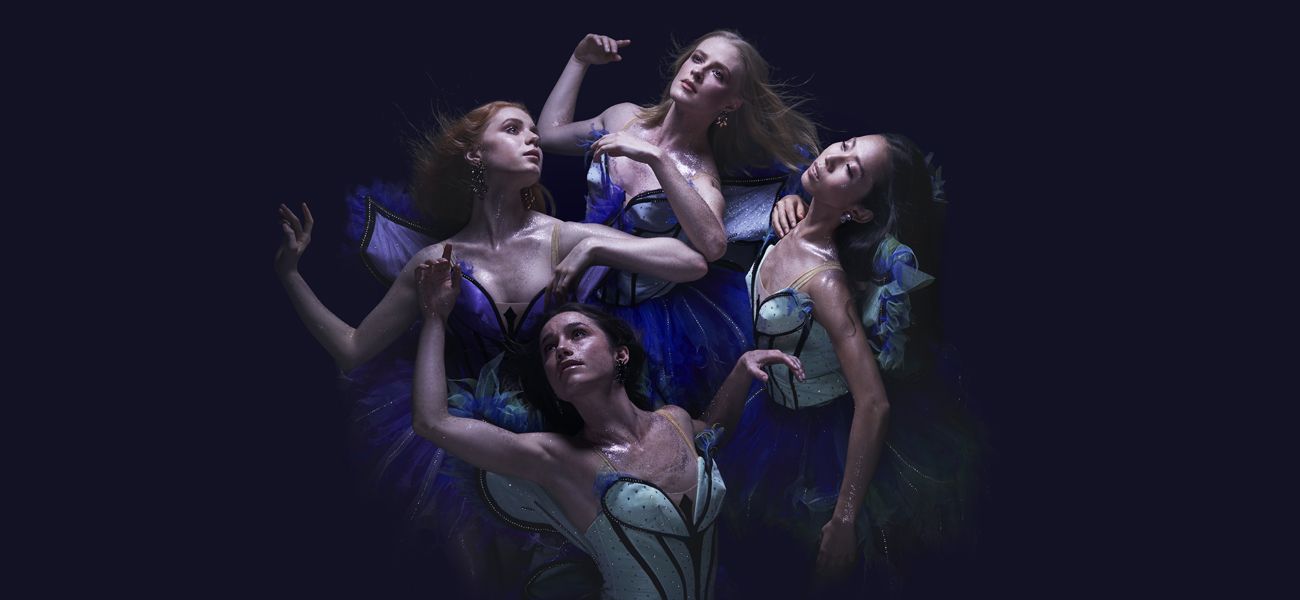The Music —
Mendelssohn’s music for A Midsummer Night’s Dream
Felix Mendelssohn (1809 – 47) was born in Hamburg, the second of four children born into an affluent, highly cultured Jewish family. His grandfather, Moses, was a celebrated philosopher, while his father Abraham (who added Bartholdy to the family surname when baptised as an adult) was a successful banker. The young Felix and his elder sister Fanny (1805 - 47) were prodigiously talented, with Felix making his public debut as a pianist at the age of nine and composing prolifically even before he entered his teens.
Some of Mendelssohn’s most frequently performed works date from his early years. The First Symphony Opus 11 was written in 1824; the Octet Opus 20 was completed when he was just 16 and the Overture to A Midsummer Night’s Dream Opus 21 a year later. The latter, written for concert performance rather than as the curtain raiser to a play, is an early example of the concert overture, a new genre which Mendelssohn helped to popularise.
The overture is in sonata form, with clearly defined sections and conventional harmonic progressions. Mendelssohn had read at least one translation of Shakespeare’s play before he began his work and within the tight rhetorical structure are themes portraying characters and incidents from the play. Light, scurrying motifs are linked to the fairy kingdom, while hunting calls and more courtly melodies portray the rustics and the world of the Athenians – punctuated by the braying of an ass.
The incidental music was commissioned by King Friedrich Wilhelm IV of Prussia, in 1842. 14 pieces, beginning with the existing overture, included songs using Shakespeare’s texts – the most famous being ‘Spotted snakes’ sung as a lullaby to Titania – and music or ‘melodramas’ to accompany spoken text. The purely instrumental music, including the fairies’ Scherzo, the Intermezzo, the Nocturne and the Wedding March, one of Mendelssohn’s most enduringly popular works, is often played together as a suite, although this was never Mendelssohn’s intention.
A new score for a new ballet
While the dazzling overture and incidental music form the majority of the music for Liam Scarlett’s ballet, these alone are not enough to accompany a full length ballet. Creating a new score for A Midsummer Night’s Dream has been a labour of love for RNZB Music Director Nigel Gaynor.
Through 2014, Nigel worked with Liam to put together a tailor-made score that fits his vision of the story. Conversations with designer Tracy Grant Lord ensured that the music would accommodate practical staging issues such as Bottom’s separation from his friends. In addition to Mendelssohn’s incidental music, Nigel has selected additional musical by Mendelssohn to suit the action and to portray many of the characters.
Shakespeare often invokes water imagery when describing Oberon, and Nigel has drawn on the majestic Hebrides Overture Opus 26 to portray the Fairy King. Mendelssohn had travelled through the Western Isles aboard a steam ship and the mystery and grandeur of the coastline inspired this well-known work. Puck, who can ‘put a girdle round the earth in 40 minutes’, is personified by the quicksilver Scherzo from the Octet, which Mendelssohn subsequently orchestrated as an alternative movement for one of his symphonies.
Nigel has orchestrated three of Mendelssohn’s Songs Without Words, originally for solo piano. The first, Opus 30 No. 1, portrays contented lovers Hermia and Lysander, while the second, the ‘Hunting Song’ Opus 19 No. 3, is used as a dance for the rustics. The discontented lovers, Helena and Demetrius, take their music from Mendelssohn’s incidental music: the Intermezzo, which was also used by Ashton, Balanchine and David Nixon in their own ballets to portray the lovers’ disharmony.
The well-known ‘Spring Song’ Opus 62 No. 6 comes towards the end of Act I as a comic pas de deux for Titania and Bottom. Symphonies also make an appearance, with the opening of Symphony No. 1 to portray Oberon’s anger at the beginning of the story and the second movement of the rambunctious Symphony No. 3 Opus 56 ‘Scottish’, for Bottom’s joyful reunion with his friends. The energy and full orchestration of this piece, like the ‘Hunting Song’ above, serves to further emphasise the contrast between the earthly characters and the speed and lightness of the fairies, portrayed with much lighter timbres and transparent orchestral textures.
Throughout this process, Nigel has sought to create ‘unity with contrasts’ in his new score, ensuring that all the music works together as a whole through the use of strongly related keys, seamless transitions, including some specially composed linking passages, and sympathetic orchestration. The freedom of creating a new score has also allowed some personal touches, including the use of the exotic Ass’s Jaw percussion instrument, which will spice up some of the interactions between Puck and the enchanted Bottom.
